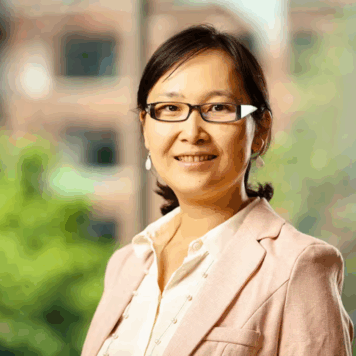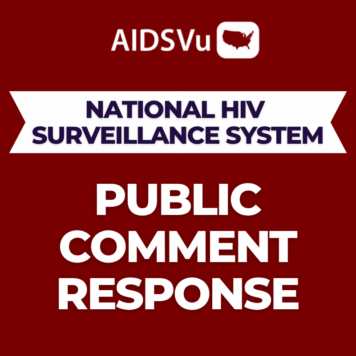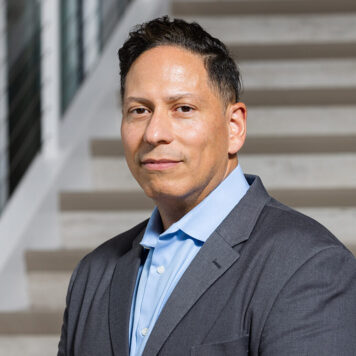 Q: Your career has focused on addressing health disparities in the South, specifically for undeserved groups like Black women and youth. What brought you to this focus, and how has your work evolved?
Q: Your career has focused on addressing health disparities in the South, specifically for undeserved groups like Black women and youth. What brought you to this focus, and how has your work evolved?
What brought me to this focus was actually a selfish reason. I experienced systems that were not serving the needs of women and children with HIV/AIDS. I live in a very poor region in Louisiana. Per capita, we have the highest rate of HIV, STDs, high school dropouts, and teen pregnancy. Basically, everything a region doesn’t want to have, we have.
I was trying to figure out what I could do to help the kids, specifically since I have a son. I saw there was only one area in town where all the kids could hang out. I was determined my baby wasn’t going to be hanging out on that corner – so that’s how the HEROES afterschool program started.
HEROES was originally founded in 1995 to help bring lifesaving services and assistance to those who are impacted by HIV in the rural South. Originally, we focused our efforts on helping only women but since then we have expanded. Finding stable funding has been the hardest obstacle we have faced. A few years ago, our afterschool program was defunded. As a result, our area’s teen pregnancy rate went up, STDs went up, everything that shouldn’t have gone up went up again.
Around four or five years ago, some of the kids who had been through our program who are now grown, saw that things were taking a turn for worse and started volunteering. With the added help we were able to restart our youth peer education programs, which provide youth with after-school education and social enrichment opportunities, including the Dancing Divas and Beat Masters programs.
However, since the COVID-19 pandemic hit earlier this year, we have since been unable to offer these programs. Unfortunately, our youth programs have remained unfunded and they continue to be a walk of faith. Since I know the need is there, our motto has been, “build it and they will come.” We try to make sure that we have something available for everyone in need.
Q: In 2018, the South accounted for 51% of all new HIV diagnoses, despite only comprising 38% of the U.S. population. How does the demonstrated need for HIV care services compare to the services available in the South?
In 2017, HEROES published our first report, HIV/AIDS in Metropolitan vs. Rural Louisiana, about HIV, stigma, and health disparities in the rural South. I was amazed because I know so many larger agencies that have so much more money that could have done similar reports. However, we saw a gap in the conversation about the extreme hardships rural areas face when considering HIV. People tend to focus on the more metropolitan areas. Where I live is a different world compared to Southern cities like New Orleans, Baton Rouge, or Atlanta. When you live in the most rural parts of this country, it almost feels like you are in a developing nation. Unfortunately, when people want to send help to our area, they send it to the bigger cities – it’s like we don’t exist.
Per capita, some rural areas have a higher rate of new HIV diagnoses compared to the more densely populated areas. People don’t want to talk about that. If they do say something about the South, they’re going to talk about the bigger cities. Even after our report came out, I had someone who I’d known for several years from Southern Louisiana try to explain to me that they had higher numbers, but they did not get that I was referencing new HIV diagnoses per capita. Even though they had worked in this field for a long time, they still thought because our numbers at first glance looked lower, we were not as important.
Q: Much of the work of HEROES is geared towards youth at high risk for HIV in rural Louisiana. In your experience, what strategies or programming best suits youth for HIV education, and why do they work?
We have several programs that are written in-house because a cookie-cutter approach is never as impactful. I think some of our programs could be duplicated across other rural regions, but the programs that works in the larger cities would probably not work here. Our approach is very tailored to the Southeast Louisiana (rural USA) area because that is where we see the need and where we know what the kids are doing. For example, a woman who works with me at HEROES also teaches at the local high school. She has a direct link to what the kids are doing and what they are saying. The most important thing for us to do is listen to the kids and use what they say to inform our programming.
Q: The geographic HIV disparity between the South and other regions of the U.S. appears to be worsening. In what ways are current systemic policies and practices reinforcing this disparity and what are some tangible steps to address it?
There are so many things that need to be done. With everything that’s going on and the current state of our public health system, we can see how policies were put into place in the past that have led us in this direction. When I would travel around the country, before COVID-19, I was able to see how other people live outside of rural areas and the resources they have access to. When I would come home, I would think, “Okay, we can make progress. We’re moving along.” But every time I’m thinking we’re making a little progress – something happens that snaps me back into reality.
When I would come home, I would think, “Okay, we can make progress. We’re moving along.” But every time I’m thinking we’re making a little progress – something happens that snaps me back into reality.
Since COVID-19 began, I have seen many organizations and local departments blaming everything on the pandemic. Lately, all I hear is, “we can’t do this because of COVID-19” or, “we can’t do that because of COVID-19.” As an example, I had a client back in March who called me for medication services. HEROES does not provide medication, but we do give referrals to state agencies that can. After I told her what she needed to do, she called me back two weeks later and still hadn’t heard from them. I called the agency again and asked what my client needs to do. They told me to call back in two weeks. It took her two months to get her medication. We can’t get to a high percentage of individuals with an undetectable viral load because we can’t keep our medication steady. Those who live in these areas constantly stress about all these things, yet the resources and money have not reached us.
I do all of this work in the rural South, but people don’t really grasp what I mean when I say rural South. Despite this, our main goal is to give individuals the tools to navigate around racism and stigma to give them access to care and treatment despite community-wide beliefs.
Subscribe Now
Like our post? Subscribe to see more below.
Monica Johnson is the Founder and Executive Director of HEROES (Helping Everyone Receive Ongoing Effective Support), and a member of the Board of Directors for the National Minority AIDS Council (NMAC).
Q: Southern HIV/AIDS Awareness Day on August 20 aims to highlight the disproportionate impact of HIV on the South. How can stakeholders best utilize this day to ensure progress is made, and how can we make sure HIV prevention and care in the South stays on the agenda year-round?
I have been trying to figure out how to keep it on the agenda for decades. Speaking for myself, one of the things I know is the HIV space can be very hard to navigate. Unfortunately, there is a little pot of money and a lot of people are fighting for it. In public health, all of them seem open to collaboration, but when the doors are shut, it can be more contentious. Our first step forward is for the organizations and agencies to truly collaborate and really work together. Right now, if they are not getting the money – they won’t participate.
The South should have never come off the agenda. HIV has been prevalent in the South from day one. This year will be my 36th as an HIV-positive person, but I still find myself saying some of the same things today as I did then.




